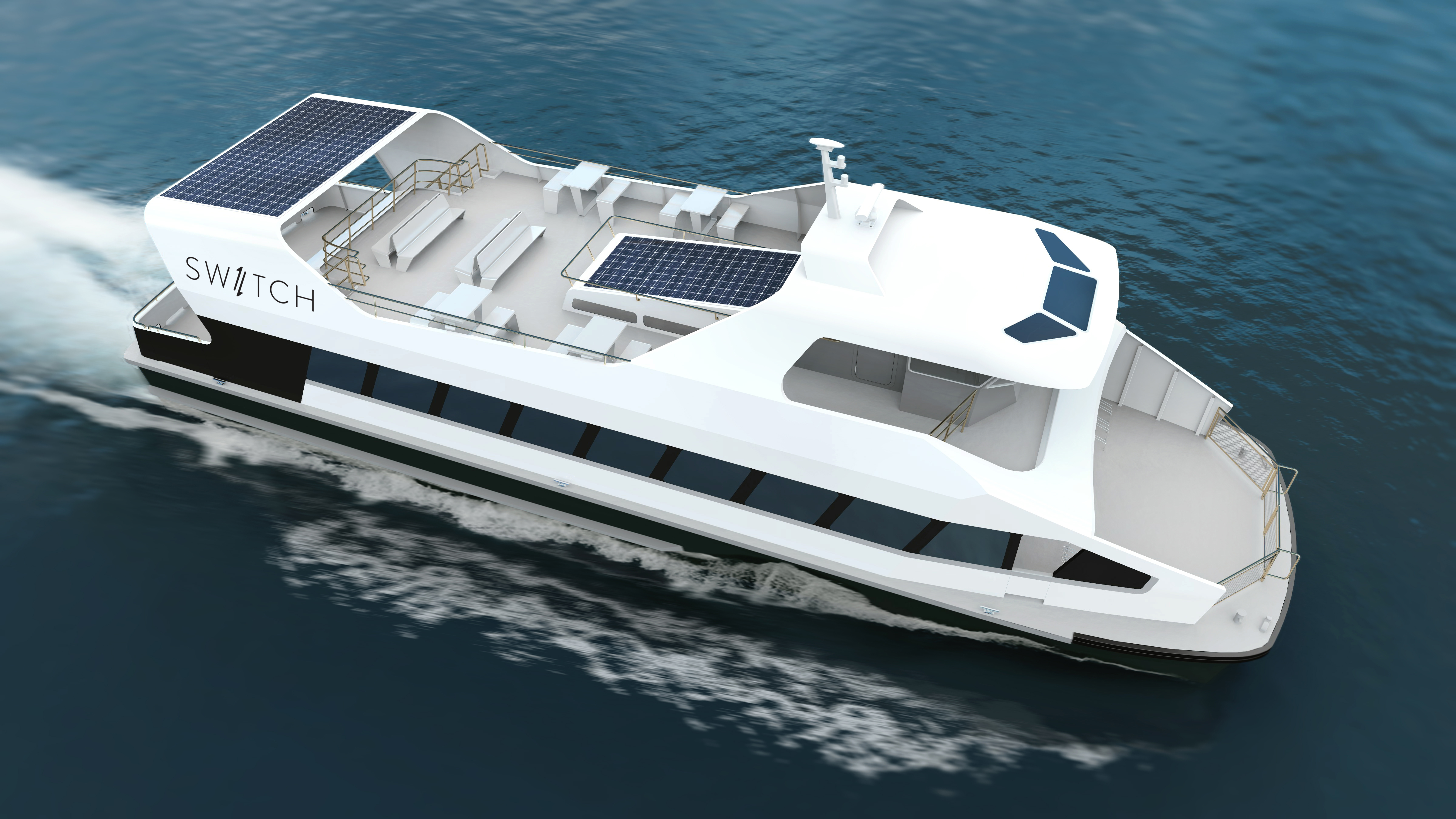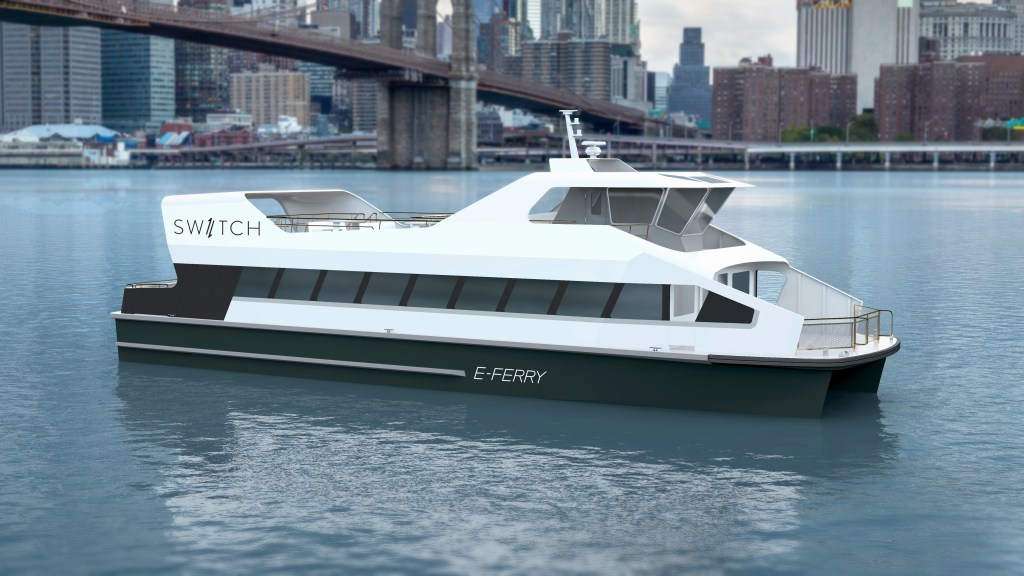In early 2019 the L train in New York City will shut down for 15 months between Manhattan and Brooklyn to repair damage caused during Hurricane Sandy. Leading up to the closure, VICE will be providing relevant updates and proposals, as well as profiles of community members and businesses along the affected route in a series we’re calling Tunnel Vision. Read more about the project here.
While the New York City transit system has continued its (perceived!) downward spiral, the recent rise of the city’s ferry system (otherwise known as NYC Ferry) has been met with both delight and skepticism. Subtly pegged as a more palatable alternative to the subways and buses (there’s craft beer! And snacks!), NYC Ferry’s six routes are filling up fast, with ridership hitting future projections much sooner than expected and the city already conducting a feasibility study for possible expansions. Yet critics point out that the city is spending $30 to $40 million a year to largely subsidize a system whose total annual ridership—3 million in its first year, reportedly—is just two-thirds of what the subway serves in a single day. Not to mention ferry riders are more likely well off, or tourists.
Videos by VICE
That reasonable skepticism has fallen upon the official mitigation plan for the L train shutdown, too. Ferries are just one of the tools being deployed by the Metropolitan Transportation Authority (MTA) and the city’s Department of Transportation (DOT) to carry the 275,000 daily commuters who will be stranded once the L goes offline in April. Although the agencies only expect 5 percent of daily commuters (or 20,000 riders) to use the temporary inter-borough ferries, the order was just scaled up for the boats to hold 240 people each. Yet that number is still not far off from what a single L train car can hold.
Those were just some of the thoughts I had when I first watched the very-start-up-like video announcing SW/TCH, a private company with plans to introduce an “e-ferry” to the waterways of New York during the L train shutdown. And not only an e-ferry, but also e-vehicles, e-scooters (if they’re legal then), and e-mopeds, to shuttle its paying members to and from the emissions-free liner. A $150 membership will get you a select number of credits, which you then use to access the different modes of mobility. Getting a spot on the list itself costs up to $75.
The service has the gleam of other “luxury” services that have popped up to serve the shutdown (read: The New L), yet a practicality otherwise unfound in the out-there ideas that VICE has covered extensively in this space. (In other words: it could very likely happen.) And its purpose carries a particular thrust now, on the heels of the UN report earlier this month warning that the world basically has ten years to get its shit together on climate change. VICE spoke with SW/TCH founder Pace Ralli about the e-ferry’s larger purpose, and what riders should expect.
VICE: Let’s start with some context. How would this work?
Pace Ralli: We came about looking at the ferry system. I came from energy and then in maritime, and sort of combining those things. I live here, I get on the ferry all the time, I love it. I love getting out on the water. It’s the best way of getting to the city and back. But there are two main problems with it. One is that we’re expanding it rapidly, but with diesel power and that’s only increasing emissions, which is not healthy for our carbon footprint nor the health of residents. The second thing that sort of factors into my commute is, ‘OK, do I have enough time to get from the ferry dock to where I’m going?’ Looking at it from a shipowner’s standpoint, there’s a new ferry that could be built; it’s not necessarily rocket science, or futuristic technology—the technology exists today. It’s just a matter of making the economics work for it. So let’s bring in a ferry that has no emissions, or at least none of the diesel emissions coming off the exhaust; you’ve always got to factor in where the power is coming from. And then, can we build off of that, and look at an all-e-commuting last mile-first mile solution?
So what are the economics of this? Why haven’t we seen an electric ferry yet?
The big hurdle is getting from hybrid, which can quite easily be applied on a vessel by installing a battery that allows the engine to operate in a more efficient manner, but it doesn’t require on-shore power, and charging. It’s just using its onboard engine to charge the battery and use it. The big jump is that infrastructure. The tricky thing there is that there’s no copy-paste; it depends on where you are, what port it is, what region it is, what the grid is; if you’re trying to incorporate renewables, what’s the renewable environment, in terms of how much solar power there is, and opportunity to capture, or wind? Long story short, it’s always different no matter where you are. There is no easy way to roll it out.
It’s hard to be scalable in rolling out recharging infrastructure… You need to have the capital partners to do it who have the risk profile, timeline, and patience to see that through. It’s a very different investor for infrastructure than it is for a tech company that wants a pretty short timeline. Essentially what we’re doing is building a charging terminal. And that’s a large parallel focus to the technology of the ferry itself: what is the on-shore requirement? It’s a homeport, hopefully tied to renewables, like solar or wind. The objective is to have an electric ferry that is zero-emissions entirely.

How will this timeline unfold, in your mind?
There are a few objectives. My first objective is to get an electric ferry operating on the river. That, to me, from an impact investor’s standpoint, is something that moves the needle. It sort of makes the existing ferry companies realize that this could be done, maybe there’s increased interest in it, and maybe the city will move in that direction. The timing of that is to have that built as soon as we can… The target is to have this ferry in the water, operating by next fall. We’d love to have it by the time the L train shuts down, but these things are quite big to build. So it takes a little bit of time.
Then there’s the objective of the in-parallel system, which is the “last mile first mile” solution. That helps anyone who is riding a ferry, whether it’s our electric ferry or the city ferry. I think there’s a huge opportunity there to add value to someone’s day by making it easier. So that’s something we’re building out now, and hope to have out helping commuters off the existing ferry system by the time the L train shuts down.
How does it fit into the larger L train shutdown plan? As you know, in addition to the NYC Ferry the MTA will have temporary ferries running as well.
I think there’s a convergence of where the need is, and what’s the best fit for this nascent form of the technology. I don’t want to say it’s new technology, because it’s just batteries that we put in trucks and cars anyway. We want to have the shortest route, so that we can have enough battery to run it as long as possible. And that sort of converges with where the L train is, and what that service is performing in terms of just going straight across the river. And so, that’s Williamsburg, Greenpoint, and the surrounding neighborhoods, which are looking for an alternative. So that was a nice convergence of where the technology would be a really good fit—because it’s a really short route across—and I think we’d dedicate the first one to that. It’s not trying to go upcurrent, or upriver, which is only going to burn up battery.
What has been the response thus far from the respective city agencies? What are the sort of hurdles there?
Private ferries use public docks today, and, essentially, it’s a DOT permit. The NYCEDC (Economic Development Corporation) runs the ferry system, and it’s widely known that it’s a subsidized system. [Without subsidies, the rider would have to pay $8.96 instead of the current $2.75] It’s over two-thirds subsidized, which, as a system, is pretty propped up. [Clean Marine Energy, Ralli’s company] talked to the EDC ferry team, and they’re very interested in new technologies. We’ve had a few technical calls with them, sort of walking them through what we see as technical feasibility: here are the battery systems, and some of the specifics on the battery and charging systems.
I think, again, they have a risk-acceptance profile that’s different than ours. For the EDC, which is a really agile organization, very forward-thinking and sharp, they have a very big challenge ahead of them where they’re expanding to the point where they’re moving people to match an aging community infrastructure, and the ferry system just needs to be expanded. Anything they do that’s a risk to meeting that challenge is something that they probably can’t adopt right now. Not that they don’t want to—and NYC Ferry, I think, is likely going to move hybrid, and ultimately electric, and hopefully this moves them along the way. So I think they’ll get there. The nice thing for a private company like us is that we’re not sort of burdened by the ‘I have to move the city’s entire population’ challenge, and we can think very strategically and specifically about it.

And I think that’s the needle that ferries often thread here: the high cost of subsidies for a system that moves a fraction of what mass transit can do, versus a legitimate community demand for ferry service. In the past, we’ve reported on the push in Canarsie for ferry service, and since then, there have been calls from other neighborhoods citywide.
More and more people are seeing the benefit of it, and how peaceful it is. But bringing in new technology, there’s no way around it: it’s more expensive. At least high-tech solutions. So you have to either provide more subsidy—which is not going to be easy to get—to bring in a service that’s meeting the same performance, but cleaner and with more expensive technology. It won’t always be as expensive, though. If you look at all the technologies in transit, and how the cost has been coming down with battery storage, it’s sort of the parallel of Tesla, starting with the high-end one, and then once that’s proven and you can build out the technology, that really drove pricing down to the more cost-friendly solutions.
In the video, we see someone crafting a cortado, and avocado toast being served—it’s typical of Brooklyn, in a lot of ways, but also seemed like a more upscale experience that could turn some people off.
It’s important to differentiate the experience a little bit. I think the ferries in the New York City system are great. I think there’s a market for a ferry experience that might be a little bit more like a coffeeshop, versus a commuter vessel. I think there’s a small segment of the commuter market that would be willing to pay for an experience that is the best 20 minutes of their day, not the worst.
How would the service itself work? If I was a passenger, how would I sign up for it?
The business model that we’re envisioning for this is a membership model, and it’s a membership that’s not just for the e-ferry, but also for the light e-vehicles, the spinoff of it. The membership would sort of be like a Class Pass model, where you pay a monthly fee, and you’re able to use your credits across the fleet, whether that’s a SW/TCH vehicle, or the ferry, which should be one asset in that fleet. Or even SW/TCH partners, so being able to “switch” between the different modes of transit, and that membership would allow you to access all of those things. Similar to ClassPass, it’d likely flex based on demand and time of day. You may be more willing to use your credits for a ride at the highest demand hours, and it sort of flexes that way. We have a lot of wood to chop as it relates to what the commuter patterns are, specifically to the community that we’re working with, which is what we’re collecting now.
What about single rides? You know, for people who maybe don’t want to pay, or can’t afford, the membership fee, which is more expensive than other forms of transit.
Right now it’s all about, ‘What’s the business model that’s going to support this new, cleaner asset coming into the system?’ It’s more expensive than a normal one, so we have to find a model that supports it. And if the membership is the model that supports that coming online, and that membership is better served by… I don’t want to say exclusive, but being able to have it just be the membership, and that’s what supports it, then I think it needs to serve the members’ needs. I don’t think it has to be an ‘Oh, we want to be the only ones on board,’ but it’s more purely the fact that they’re able to reserve their spot on board.
I also want to invite anyone to be able to get on board and ride it—maybe that’s everyone gets a free ride the first time.* I wouldn’t tell you that we have the business model worked out, where I know exactly what a single ride would cost.
*In an email later to VICE, a SW/TCH official said that the first ride on the e-ferry will in fact be free.
An earlier version of this article stated that reserving a spot on the SW/TCH list cost “upward of $75.” The most expensive reservation is $75. We regret the error.
This interview has been lightly edited, and condensed.
Sign up for our newsletter to get the best of VICE delivered to your inbox daily.
Follow John Surico on Twitter.
More
From VICE
-

Photo: Svetlana Iakusheva / Getty Images -

Photo: Marc_Osborne / Getty Images -

Photo: Gremlin / Getty Images -

Photo: Antoine Rouleau / Getty Images
